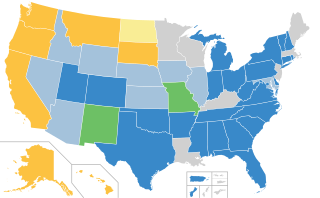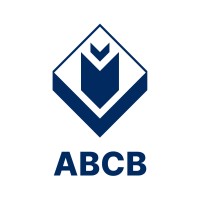
Plumbing is any system that conveys fluids for a wide range of applications. Plumbing uses pipes, valves, plumbing fixtures, tanks, and other apparatuses to convey fluids. Heating and cooling (HVAC), waste removal, and potable water delivery are among the most common uses for plumbing, but it is not limited to these applications. The word derives from the Latin for lead, plumbum, as the first effective pipes used in the Roman era were lead pipes.

A plumber is a tradesperson who specializes in installing and maintaining systems used for potable (drinking) water, hot-water production, sewage and drainage in plumbing systems.

Organic certification is a certification process for producers of organic food and other organic agricultural products, in the European Union more commonly known as ecological or biological products. In general, any business directly involved in food production can be certified, including seed suppliers, farmers, food processors, retailers and restaurants. A lesser known counterpart is certification for organic textiles that includes certification of textile products made from organically grown fibres.

Professional diving is underwater diving where the divers are paid for their work. The procedures are often regulated by legislation and codes of practice as it is an inherently hazardous occupation and the diver works as a member of a team. Due to the dangerous nature of some professional diving operations, specialized equipment such as an on-site hyperbaric chamber and diver-to-surface communication system is often required by law, and the mode of diving for some applications may be regulated.

Product certification or product qualification is the process of certifying that a certain product has passed performance tests and quality assurance tests, and meets qualification criteria stipulated in contracts, regulations, or specifications.
The Nationwide House Energy Rating Scheme (NatHERS) is an Australian scheme to measure the energy efficiency of a residential dwelling. An accredited software tool assesses the home based on a variety of criteria and produces an energy star rating.
Building regulations in the United Kingdom are statutory instruments or statutory regulations that seek to ensure that the policies set out in the relevant legislation are carried out. Building regulations approval is required for most building work in the UK. Building regulations that apply across England and Wales are set out in the Building Act 1984 while those that apply across Scotland are set out in the Building (Scotland) Act 2003. The Act in England and Wales permits detailed regulations to be made by the Secretary of State. The regulations made under the Act have been periodically updated, rewritten or consolidated, with the latest and current version being the Building Regulations 2010. The UK Government is responsible for the relevant legislation and administration in England, the Welsh Government is the responsible body in Wales, the Scottish Government is responsible for the issue in Scotland, and the Northern Ireland Executive has responsibility within its jurisdiction. There are very similar Building Regulations in the Republic of Ireland. The Building Regulations 2010 have recently been updated by the Building Safety Act 2022.
A building inspection is an inspection performed by a building inspector, a person who is employed by either a city, township or county and is usually certified in one or more disciplines qualifying them to make professional judgment about whether a building meets building code requirements. A building inspector may be certified either as a residential or commercial building inspector, as a plumbing, electrical or mechanical inspector, or other specialty-focused inspector who may inspect structures at different stages of completion. Building inspectors may charge a direct fee or a building permit fee. Inspectors may also be able to hold up construction work until the inspection has been completed and approved.
Building officials of developed countries are generally the jurisdictional administrator of building and construction codes, engineering calculation supervision, permits, facilities management, and accepted construction procedures.
The Code for Sustainable Homes was an environmental assessment method for rating and certifying the performance of new homes in United Kingdom. First introduced in 2006, it is a national standard for use in the design and construction of new homes with a view to encouraging continuous improvement in sustainable home building. In 2015 the Government in England withdrew it, consolidating some standards into Building Regulations.

The Chartered Institution of Building Services Engineers is an international professional engineering association based in London, England that represents building services engineers. It is a full member of the Construction Industry Council, and is consulted by government on matters relating to construction, engineering and sustainability. It is also licensed by the Engineering Council to assess candidates for inclusion on its Register of Professional Engineers.

The Australian Institute of Building (AIB) is a professional society founded in 1951, incorporated in 1955 and granted a royal charter in 1969. The institute is an association of building professionals, associate professionals and technicians engaged in building practice, teaching, or research throughout Australia and overseas. It has chapter offices in Hong Kong and Singapore and had a chapter office in New Zealand until the formation of the New Zealand Institute of Building in 1984.
BREEAM, first published by the Building Research Establishment (BRE) in 1990, is the world's longest established method of assessing, rating, and certifying the sustainability of buildings. More than 550,000 buildings have been 'BREEAM-certified' and over two million are registered for certification in more than 50 countries worldwide. BREEAM also has a tool which focuses on neighbourhood development.

The Bureau of Indian Standards (BIS) is the National Standards Body of India under Department of Consumer affairs, Ministry of Consumer Affairs, Food & Public Distribution, Government of India. It is established by the Bureau of Indian Standards Act, 2016 which came into effect on 12 October 2017. The Minister in charge of the Ministry or Department having administrative control of the BIS is the ex-officio President of the BIS. BIS has 500 plus scientific officers working as Certification Officers, Member secretaries of technical committees and lab OIC's.
NICEIC is one of several organisations which assesses the competence of businesses undertaking electrical work in the UK. NICEIC is one of several providers given Government approval to offer Competent Person Schemes in England and Wales to oversee electrical work within the scope of Part P of the Building Regulations.

Green buildings in Australia are assessed and rated by a variety of government and independent ratings systems.

The International Plumbing Code is a plumbing code and standard that sets minimum requirements for plumbing systems in their design and function, and which sets out rules for the acceptance of new plumbing-related technologies. It is published by the International Code Council based in Washington, D.C., through the governmental consensus process and updated on a three-year cycle to include the latest advances in technology and safest plumbing practices. The current version of this code is the 2021 edition. The IPC protects public health and safety in buildings for all water and wastewater related design, installation and inspection by providing minimum safeguards for plumbers and people at homes, schools and workplaces. Water heaters, anti-scalding devices, back-flow prevention methods, water pipe sizing and many other such issues are addressed in the IPC.

The diving supervisor is the professional diving team member who is directly responsible for the diving operation's safety and the management of any incidents or accidents that may occur during the operation; the supervisor is required to be available at the control point of the diving operation for the diving operation's duration, and to manage the planned dive and any contingencies that may occur. Details of competence, requirements, qualifications, registration and formal appointment differ depending on jurisdiction and relevant codes of practice. Diving supervisors are used in commercial diving, military diving, public safety diving and scientific diving operations.

The National Construction Code (NCC) is a set of minimum requirements for buildings in Australia. The requirements concern the aspects of health, safety, accessibility, amenity and sustainability of the types of buildings that the code applies to. The Code is published by the Australian Building Codes Board (ABCB) in service to the Australian Federal Government as well as State and Territorial governments of Australia.












